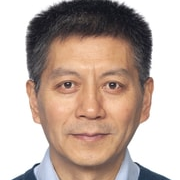What Do We Still Want to Know 90 Years After the Continuous Random Network (CRN) Theory?
A special issue of Ceramics (ISSN 2571-6131).
Deadline for manuscript submissions: closed (31 October 2021) | Viewed by 11171
Special Issue Editors
Interests: amorphous and crystalline materials; glass transition; vitrification; nuclear waste management; immobilisation; radiation effects
Special Issues, Collections and Topics in MDPI journals
Interests: glass materials for electrodes and electrolytes in Li/Na ion batteries
Interests: the nature of glass state and glass transition; the relationship between microstructures and properties of glasses and ceramics; transmission electron microscopy; electron energy loss spectroscopy
Special Issue Information
Dear Colleagues,
In October 1932, almost 90 years ago, WH Zachariasen published his paper “The Atomic Arrangement in Glass”. Since then, CRN theory has become the most common model for the structure of glasses. While the theory is not challenged for its description of the short-range and long-range structure, glass structure in the medium range (0.5–2 nm) is still a controversial topic, and it has triggered many debates in the scientific community. It is difficult to know how much the progress of glass science has been hindered by the lack of knowledge of atomic arrangements in the medium range. Perhaps, the medium-range structure of glass plays a vital role in the nature of the glass state and its physical and chemical properties.
As the 90th anniversary of Zachariasen's famous paper approaches, this Special Issue will focus on the medium-range structures in glasses, its characterization, formation, and its relation with physical properties. Full research articles, short communications, and comprehensive reviews are welcome.
The proposed topics include but are not limited to the following:
-Characterization of structures of various glasses by advanced structural probes (X-ray and neutrons scattering, TEM, EXAFS, NMR, XANES, Raman spectroscopy, EELS);
-Understanding the glass formation process (inhomogeneities in glasses, clusters formations, correlation between viscosity-temperature relations with the evolution of structure of glasses, influence of cooling rates on properties, etc.);
-Influence of glass structures on its physical properties (brittleness of bulk glasses, high strength of glass fibers, anomalous low thermal expansion coefficient of silica glass).
Prof. Dr. Michael I. Ojovan
Prof. Dr. Yuanzheng Yue
Dr. Shangcong Cheng
Guest Editors
Manuscript Submission Information
Manuscripts should be submitted online at www.mdpi.com by registering and logging in to this website. Once you are registered, click here to go to the submission form. Manuscripts can be submitted until the deadline. All submissions that pass pre-check are peer-reviewed. Accepted papers will be published continuously in the journal (as soon as accepted) and will be listed together on the special issue website. Research articles, review articles as well as short communications are invited. For planned papers, a title and short abstract (about 100 words) can be sent to the Editorial Office for announcement on this website.
Submitted manuscripts should not have been published previously, nor be under consideration for publication elsewhere (except conference proceedings papers). All manuscripts are thoroughly refereed through a single-blind peer-review process. A guide for authors and other relevant information for submission of manuscripts is available on the Instructions for Authors page. Ceramics is an international peer-reviewed open access quarterly journal published by MDPI.
Please visit the Instructions for Authors page before submitting a manuscript. The Article Processing Charge (APC) for publication in this open access journal is 1600 CHF (Swiss Francs). Submitted papers should be well formatted and use good English. Authors may use MDPI's English editing service prior to publication or during author revisions.
Keywords
- Continuous random network theory
- Medium-range structure
- Cluster forming
- Local ordering
- Entropy changes
- Nature of glass transition







